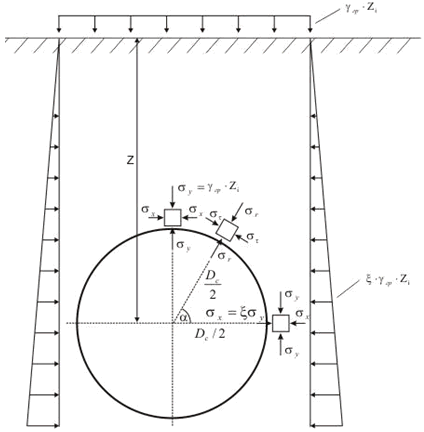

PASS/START-PROF calculates ring bending stress using a finite element model of the pipe cross-section.
Vertical and horizontal soil loads are applied to the entire pipe perimeter as shown below.

The software models soil as discrete compression-only springs around the pipe perimeter.
Springs deactivate when tension is detected, typically occurring at the top of the pipe cross-section due to soil separation.
Internal pressure and hydrostatic pressure are applied radially to the pipe wall.
The analysis includes geometric nonlinearity, accounting for pressure-induced stiffness effects.

For open trench installations, soil pressure is calculated using the full burial depth without considering soil arching.
Soil pressure increases linearly with depth in trench installations.
For trenchless installations at significant depths, a natural soil arch forms above the pipe.
This arch supports the overburden, and only the soil within the arch exerts pressure on the pipe.



The ring bending stress distribution is shown above.
This stress component is used in piping codes to account for soil-induced stresses in buried pipe analysis.